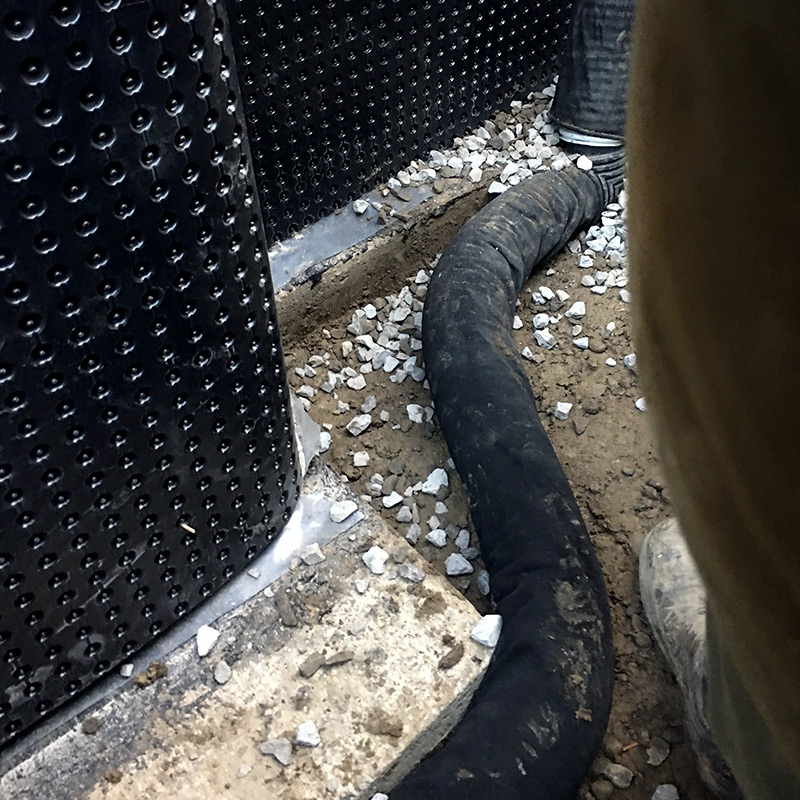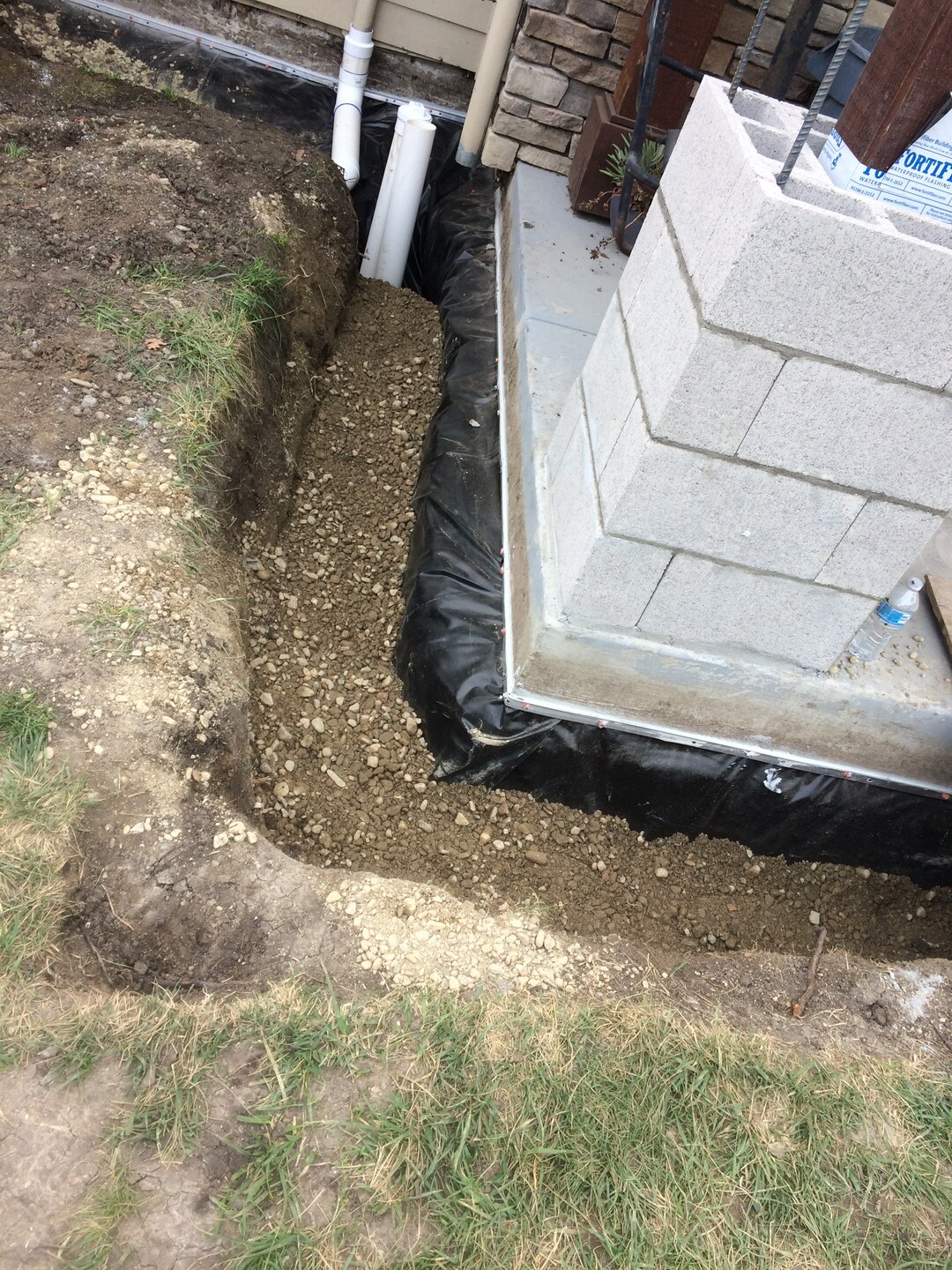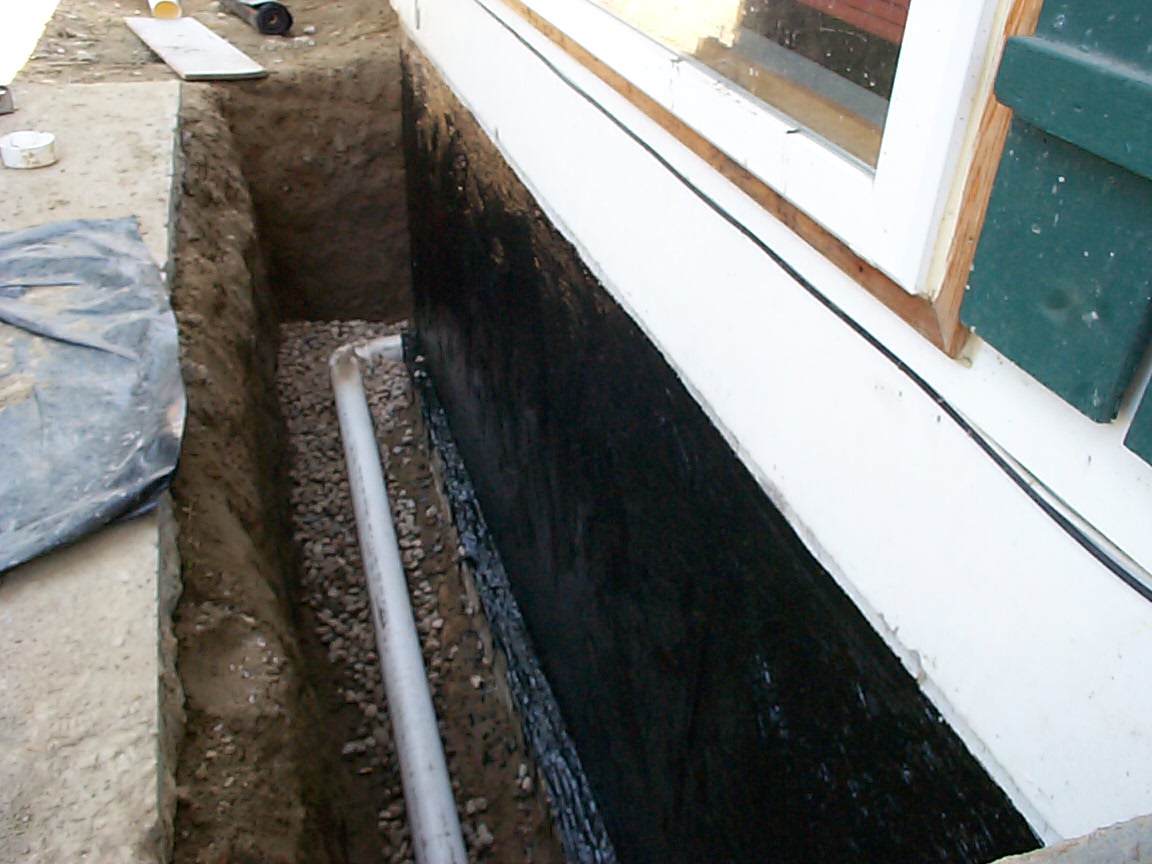Footing Drain Servicesin Washington MI
Footing Drains to Ensure Solid and Dry Foundations
We Are Locally Owned & Operated For Over 37 Years
Contact Us Today!
We Serve Businesses In And Around The Following Cities:
About Footing Drain Services
Unlocking the Importance of Footing Drain
Managing water flow in commercial properties is a daunting task that every property owner in Washington grapples with. One aspect that needs critical attention due to Washington’s rainy weather is the footing drain system. This guide delves deep into the subject of footing drains, unraveling the process, its benefits, and practical applications. Along the way, valuable insights and recommendations will be shared regarding how D&J Contracting can transform the reality of the footing drain in Washington commercial properties.
Understanding the Footing Drain
The resilience and durability of a commercial building significantly relies on the robustness of its footing drain system. Essentially, a footing drain is an exterior drainage system installed around the perimeter of a building’s foundation to redirect water away from the foundation. Usually, it comprises pipes laid alongside the foundation footing drain system which capture and draw away any water that settles at the foundation’s base. These collected waters are then channelled to delegated runoff areas, ensuring the commercial properties’ foundations remain dry and reduce water-related issues.
Demystifying the Footing Drain Process
The installation of a house footing drain starts by digging trenches around the building’s base during the building construction. Known as the footing drain excavation, it must be done according to the site’s natural slopes for gravity-assisted drainage. Next, a filter fabric is placed in the trench, followed by drainage pipes. Finally, the trench is filled with gravel or crushed stone before overlaying it with the filter cloth. Once done correctly, the rainwater gets collected in the gravel and filters down to the footing drains basement below the surface.
In scenarios where footing drains are not maintained, footing drain repair or footing drain replacement may be inevitable. Despite the hectic process, it is of prime importance to ensure the building’s structural stability. D&J Contracting can help you evade this cost and hassle by ensuring efficient and expert installation from the start.
Benefits of the Footing Drainage System
From preventing major water damage to maintaining structural integrity, the perks of a well-installed footing drain system are immense. One of the primary benefits it provides is protection against moisture damage, thus increasing the life of the building materials and reducing maintenance costs.
Another critical area is the prevention of basement flooding. The footing drain keeps basements dry by taking runoff water from the walls and safely expelling it away from the property. Without an efficient footing drain system, commercial properties may frequently grapple with drenched basements, a significant concern for property owners in the rainy city of Washington.
Moreover, it also contributes to improved health conditions by reducing the likelihood of mold and mildew growth. These are attracted by moist conditions and can result in unhealthy breathing conditions for the occupants. So, having a foundation footing drain system is a practical step towards maintaining a healthy commercial environment.
Real-world Applications of Footing Drain
In a busy and bustling city like Washington, commercial properties significantly benefit from an exterior footing drain. Malls, office buildings, warehouses, and schools are some instances where the benefits of this system are realized. During heavy downpours, these institutions remain unscathed due to the efficient redirection of water away from their foundation by the footing drains.
Consider a large office building in Washington D.C. As a hub of activity, any interruption due to water damage can have immense effect on productivity. D&J Contracting, as a reliable service partner to this office building, implemented a robust footing drain system. Despite a challenging rain season, the office building remained unaffected without any water intrusion at the basement or damage to the structural integrity – a testament to the importance of a well-installed footing drainage system.
Entrust Footing Drain Matters to Professionals Team
Just as a commercial property’s structural integrity is crucial, so is the reliance on professionals to manage footing drains. Engaging skilled specialists like D&J Contracting will play a leading role in an efficient drainage system, from planning to installation and maintenance. With a track record of successful projects, D&J Contracting demonstrates reliability and long-term commitment to creating effective footing drainage solutions.
In conclusion, the importance of an effective footing drain cannot be stressed enough. It offers a shield against costly water damages while providing peace-of-mind to commercial property owners. Whether you need to install a new footing drainage system, repair an existing one or replace a faulty system, partnering with seasoned experts like D&J Contracting can make the difference. Don’t hesitate to explore their guidance for a foolproof footing drain solution and ensure your commercial property remains dry and damage-free.
Footing Drain Services Gallery


Call Us Today to receive your Free Quote for
Footing Drain in Washington
Serving: Washington, Michigan

About Washington, Michigan
Washington Township was organized in 1827. It is home to the historic Octagon House, built by Loren Andrus from 1858 to 1860.
Westview Orchards was founded in what is now Washington Township in 1813. The Mount Vernon Cemetery, located at the southeast corner of Mt. Vernon Road and 28 Mile Road, is evidence of a former settlement, named for George Washington’s estate. The village of Mount Vernon once had a post office with William Austin Burt as its first postmaster in 1832.
Washington Township is in northwestern Macomb County and is bordered to the west by Oakland County. The village of Romeo is partially in the northeast part of the township. Ray Township is to the east, Shelby Township is to the south, and Bruce Township is to the north. Washington Township is 28 to 34 miles (45 to 55 km) north of downtown Detroit.
According to the United States Census Bureau, the township has a total area of 36.9 square miles (96 km), of which 35.6 square miles (92 km) are land and 1.3 square miles (3.4 km), or 3.46%, are water.
- Clifton Mills is an unincorporated community near the intersection of 31 Mile Rd. and Mt. Vernon Rd. (42°47′06″N 83°05′10″W / 42.78500°N 83.08611°W ;Elevation: 853 ft./260 m.).
- Mount Vernon is an unincorporated community in the southwest portion of the township at Mt. Vernon and 28 Mile Roads (42°44′31″N 83°05′13″W / 42.74194°N 83.08694°W ;Elevation: 830 ft./253 m.).
- Romeo is a village in the northeast corner of the township. Most of the village is in adjacent Bruce Township.
- Washington is an unincorporated community in the south central portion of the township just west of M-53 at 42°43′28″N 83°02′10″W / 42.72444°N 83.03611°W. Located at the intersection of North 26 Mile Rd. and VanDyke Ave.
As of the census of 2010, there were 25,139 people (up from 19,080 in 2000), 9,258 households, and 7,160 families residing in the township. The population density was 699.2 inhabitants per square mile (270.0/km). There were 9,258 occupied housing units and 612 vacant units. The racial makeup of the township was 94.8% White, 1.6% African American, 0.2% Native American, 1.0% Asian, 0.04% Pacific Islander, 1.0% from other races, and 1.3% from two or more races. Hispanic or Latino people of any race were 3.9% of the population.
There were 9,258 households, out of which 32.9% had children under the age of 18 living with them, 64.9% were married couples living together, 8.9% had a female householder with no husband present, and 22.7% were non-families. 19.2% of all households were made up of individuals, and 7.6% had someone living alone who was 65 years of age or older. The average household size was 2.70 and the average family size was 3.11.
In the township the population was spread out, with 25.0% under the age of 18, 7.3% from 18 to 24, 23.3% from 25 to 44, 30.3% from 45 to 64, and 14.1% who were 65 years of age or older. The median age was 41 years. For every 100 females, there were 97.8 males. For every 100 females age 18 and over, there were 94.7 males.
The median income for a household in the township was $68,841 in 2000 and $83,348 in 2016; the median income for a family was $78,988 in 2000 and $94,057 in 2016. In 2000, males had a median income of $60,721 versus $31,213 for females. The per capita income for the township was $38,657. About 5.7% of families and 7.1% of the population were below the poverty line (up from 2.8% of families and 3.7% of all individuals in 2000), including 9.6% of those under age 18 (up from 5.0% in 2000) and 5.9% of those age 65 or over (up from 2.7% in 2000).
The township has a supervisor-board style government with an elected supervisor, clerk, treasurer and four trustees.
The school districts serving the township residents are Romeo Community Schools, Utica Community Schools, and Rochester Schools from Oakland County.
Call Us Today to receive your Free Quote for
Footing Drain in Washington
Related Services in Washington, Michigan
We Serve Businesses In The Following Zip Codes:
48007, 48015, 48021, 48026, 48035, 48036, 48038, 48042, 48043, 48044, 48045, 48046, 48047, 48048, 48050, 48051, 48066, 48071, 48080, 48081, 48082, 48083, 48084, 48085, 48088, 48089, 48090, 48091, 48092, 48093, 48098, 48099, 48225, 48230, 48236, 48310, 48311, 48312, 48313, 48314, 48315, 48316, 48317, 48318, 48397